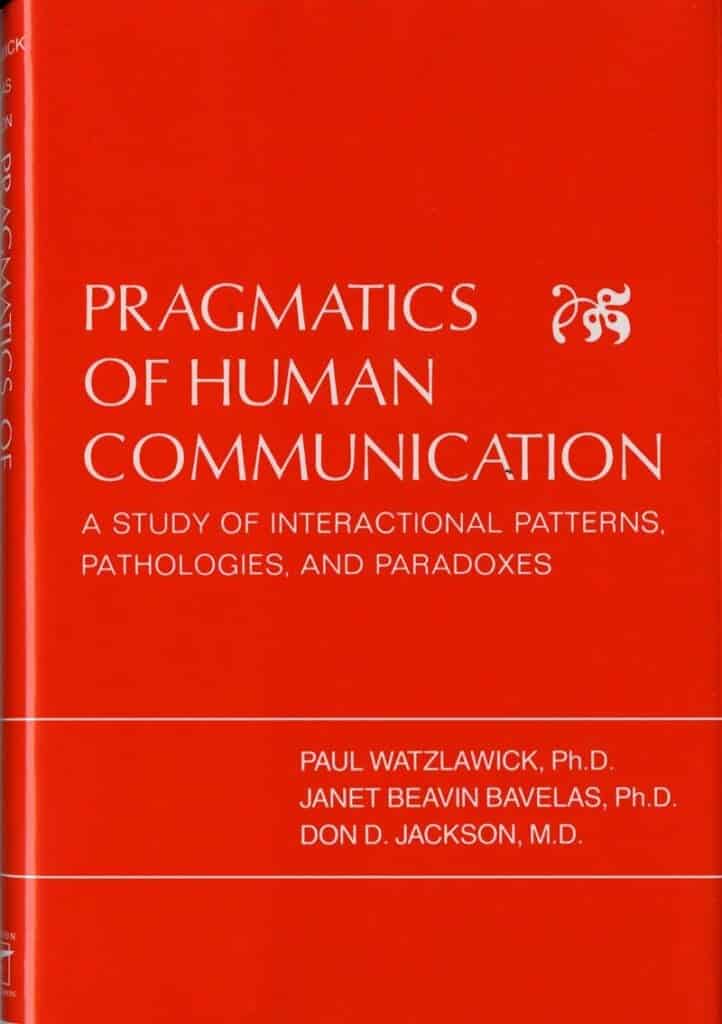
However, for our purposes, this last element is of little relevance. What matters most is human communication’s basic properties (or principles). To compare music and poetry, one must first start from a common ground to avoid affirmations that may be valid in one case and utterly inappropriate in the other. The first and most important question could be expressed in this way: is it possible to compare these two arts on the level of communication?
Pragmatics of human communication
The first principle of the pragmatics of human communication unequivocally states that one can’t not communicate. In other words, any form of expression directed to a human audience is always a form of communication (including silence), that is, a message transfer from a source to a destination. The problem may arise when we apply the concepts of semiotics and start looking for signifiers and meanings when evaluating whether a particular form of communication is assimilated into a language.
According to musicological and philosophical research (e.g., Peter Kivy’s research published in the delightful book “Introduction to a Philosophy of Music“), music can be defined as a kind of language endowed with a rigorous syntax but, at the same time, utterly devoid of semantics. Music can arouse emotions, but fails to convey timely (or even inaccurate) information about concepts. I fully share this view, which is difficult to counter in the case of absolute music (i.e., devoid of any form of text).
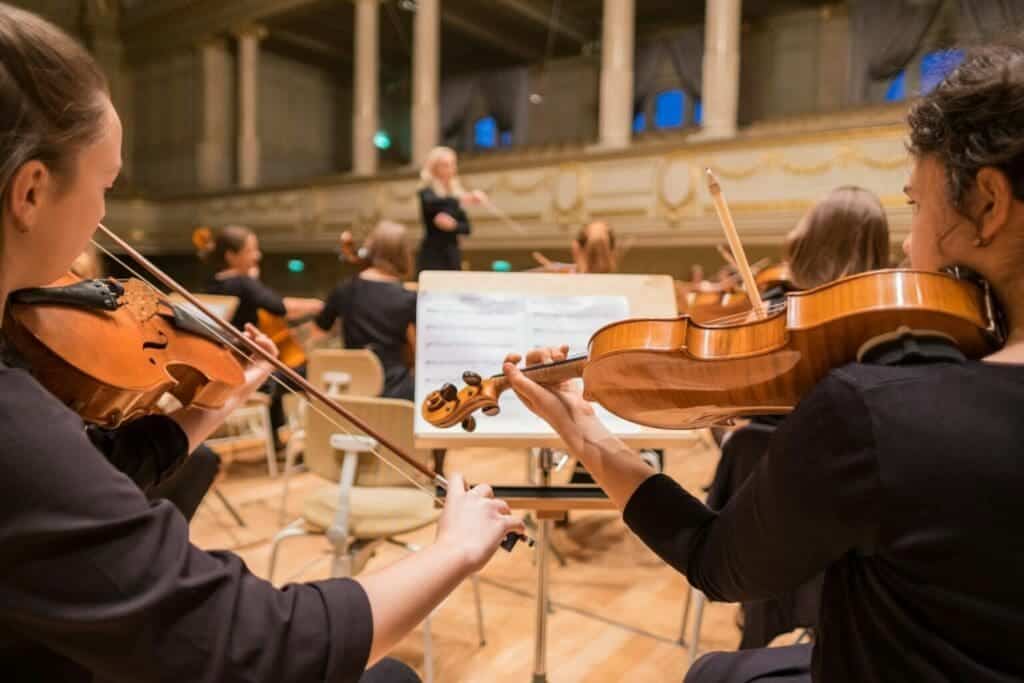
A hypothetical “Symphony No. 7 in F minor” is undoubtedly a form of communication (what isn’t?) and indeed can be counted among the most complex expressions of communication itself. Still, it can never express an elementary concept such as “Today is Sunday, it’s sunny, and I wish to take a walk in the park and stop to eat at a little kiosk by the lake.”
What is the message conveyed by the music?
At most, the symphony’s movements may reflect the message’s psychological phases: calmness, serenity, natural sounds, etc. But this in no way guarantees the “success” of the process. Some might perceive calmness, yes, but liken it to a dreamlike “mindscape,” more suited to dreaming than to waking (i.e., the exact opposite of the verbal message). Others might intend natural sounds, imitations subservient to melody, etc.
On the other hand, poetry is based on descriptive natural language par excellence. A verse can be simple, cryptic, metaphorical, dialogic, etc., but, in any case, it expresses something precise despite the possible difficulty of signification. At this point, however, it is essential to clarify. After reading the first part of this paragraph, some people may have turned up their noses, thinking, “How can we talk about precision in the case of poetic expression?”
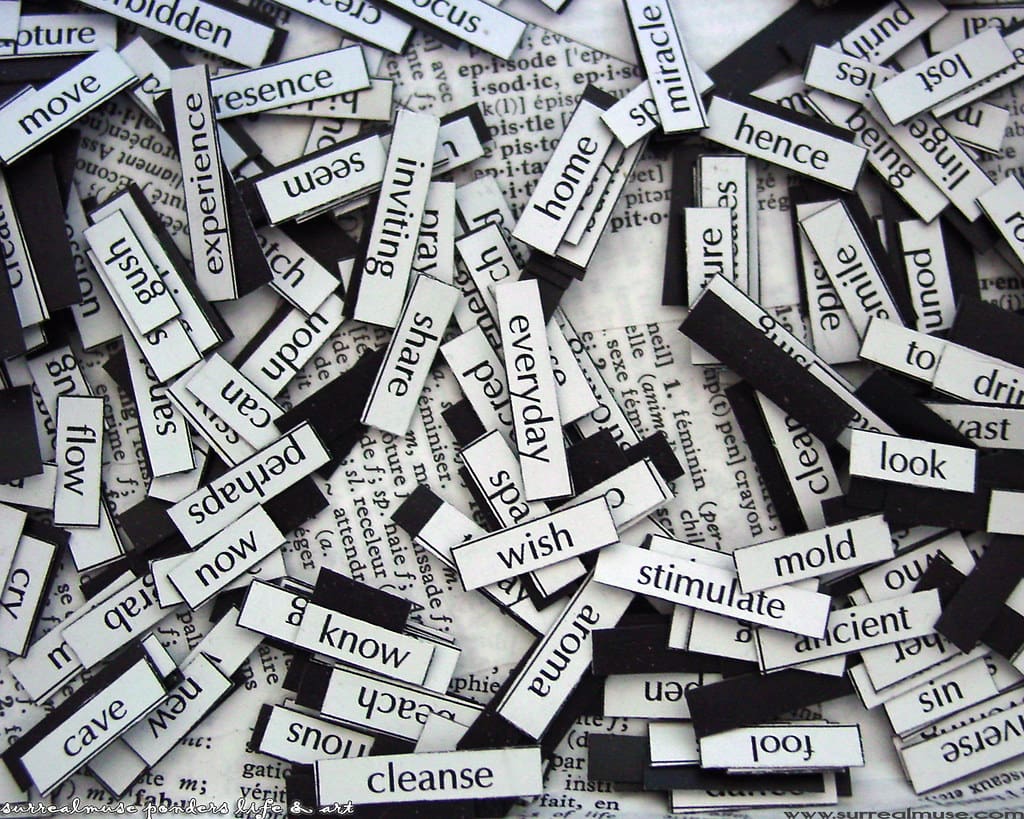
If we compare the different forms of linguistic communication, poetry is much less accurate than narrative. Saying “the house is white” is not equivalent to spouting the line “a deafening silence.” In the first case, the determination is precise and leaves no room for interpretation. It could also be expressed by saying, “The object called home emits light with a wavelength of 520 nm,” but what about the second message?
The poetic message
It is based on a rhetorical figure (the oxymoron) contrasting two antithetical concepts. From a physical point of view, if one is inside an anechoic chamber and the noise level is negligible (i.e., there is almost absolute silence), the conditions do not exist for any living being to become deaf from excess sound pressure. So, interpretation must go through an intermediate stage concerned with reassigning meanings according to a non-natural principle. In this case, the idea of something “deafening” must override elemental signification to transcend into a more “fluid” state, in which the annoyance of constant din is transposed to a diametrically opposite realm. The poem, then, wants to tell us that absolute silence haunts the poet like the most annoying noise.
For our purposes, however, we must narrow the field and analyze only the poetry-music pair, disregarding other forms of expression. This should not have any negative impact on the validity of the treatment. So, we can finally ask: are poetry and music somehow related? It is well known how adjectives belonging to one sphere are often used in the other. It is not uncommon to hear talk of “musicality of the poetic text, rhythm of the verses” and, at the same time, “elegiac musical composition” or “motif with poetic traits.” Such contaminations are always welcome as they help the artist expand the boundaries of the work, transcending into a creative field of ever-widening limits.
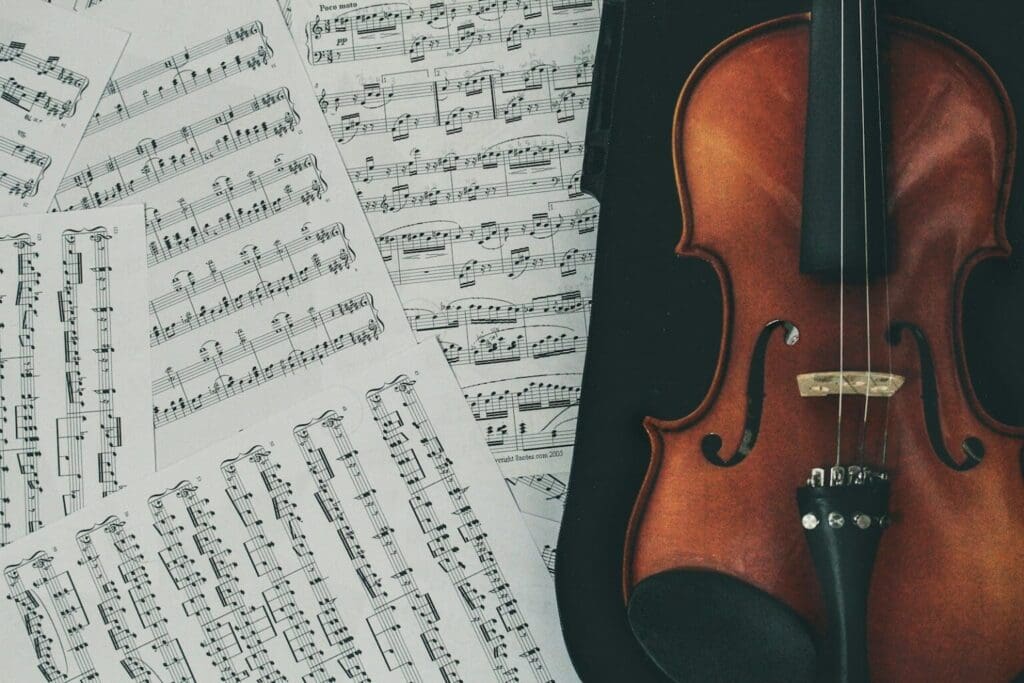
To better qualify our problem, it is necessary to resort to another fundamental aspect of the pragmatics of human communication: the relationship between analog messages and digital messages. According to Watlzawick and co.’s theory, a communication object can come in two very different, in fact opposite, content forms.
Analog and digital messages
Similar to electronic signals, a digital message is based on precise, ideally determined content. Our example, “The House is white,” is a perfect candidate to be a digital message if there is no doubt about what house is being discussed. In addition, the concept of “white” is a literary way of expressing information of a physical nature (to be exact, a color such as “green” is not perfectly assimilable to digital information since, physically, “green” is defined as any electromagnetic wave with a wavelength between 500 and 565 nm – however, human language implicitly refers to precisely that range and not, for example, to 522 nm green).
When related to music, poetry, therefore, appears strongly digital. The verse “deafening silence” also “precisely” expresses a condition (silence) and its abstract property (being deafening). It matters little if signification requires more effort than decoding a newspaper article. For our purposes, the information is “exact” because it leaves (too much, to be exact) no room for free interpretation.
Music as an analog message contrasted with the digitality of poetry
In contrast, a musical motif or an entire composition of absolute music appears inherently “fuzzy.” The poetic expression “strolling through the woods” in music results from a subjective mental process that might try to imitate the sounds of nature, but in any case, would always end up leaving something “hanging.” In other words, without any indication (e.g., Sinfonia Pastorale or Le Sacre du Printemps), the listener is not “forced” to understand at least the composer’s basic ideas.
Returning to the line “deafening silence,” one might disagree with the poet, consider the oxymoron inappropriate, etc.. Still, one cannot fail to receive it accurately (for the dual reason that one cannot fail to communicate and that the message is contextually digital). On the contrary, it is expected to read musicological texts where critics express their opinions about what might have gone through the composer’s mind. Depending on the scope of work, the conjectures could probably be accurate, but there is nothing to confirm these assumptions. We are in the domain of analog messages.
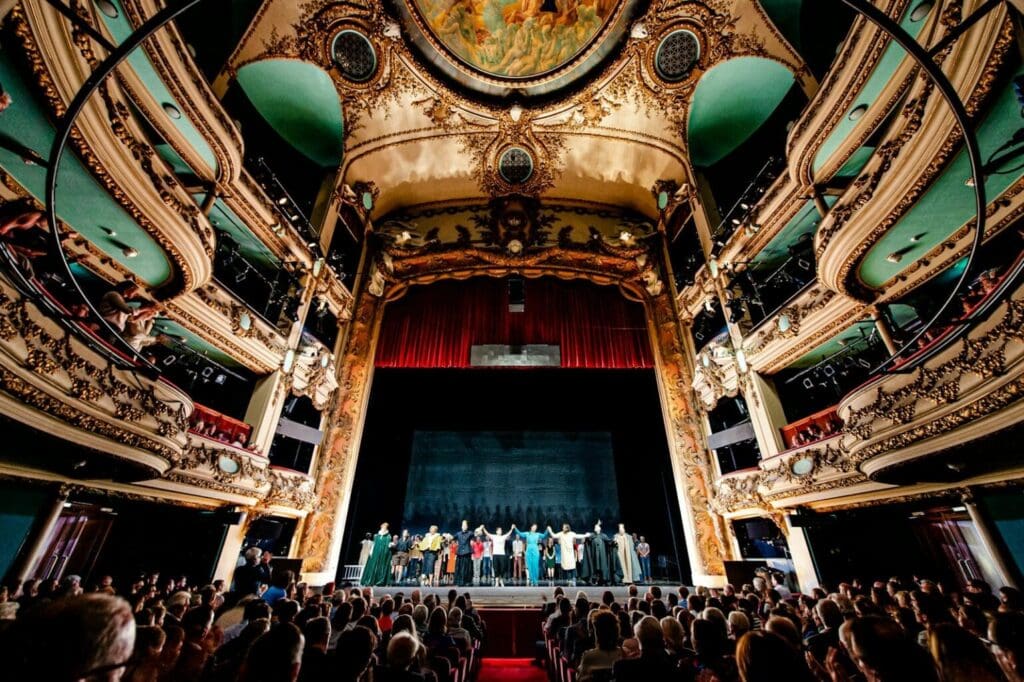
The synthesis: the marriage of music and poetry
We have thus reached the point where poetry and music seem to be opposites of the same communicative project. Both primarily aim to excite the audience’s emotional response, but the tools are very different and, in a sense, complementary. Indeed, opera has for centuries been the crowning achievement of a joint effort (alas, much more focused on music than on poetic quality). The digital messages of the verses were accompanied by as many analog messages, and the whole (no longer the sum of the parts) created an atmosphere in which the music’s rhythmic, melodic, and harmonic elements amplified the power of intelligibility.
This concept was perfectly understood by Bach, who, in his Cantatas serving the Lutheran Sunday liturgies, successfully marked the theological value of many Gospel concepts through skillful use of polyphony (both vocal and instrumental) and harmonic/contrapuntal variations. The “journey” continued in the following centuries, even as the debate on absolute music became a recurring theme (primarily thanks to Hanslick and his indispensable essay “On the Musically Beautiful“). The last genuinely great theorist of this “synthetical” relationship was certainly Wagner, with his ideas of total artwork. An opera where the parts are not elements to be assembled (as was often the case in the relationships between composers and librettists) but vital organs whose coexistence makes one indispensable to the other and vice versa.
Wagner succeeded in creating a hybridization of poetry and music (he was the author of both). The characters entered the scene to send digital messages, but his music, through the skillful use of leitmotif, “imitated” the words and even the images. Even before the appearance of a singer, the announcement of a leitmotif indicated his or her imminent appearance, as if an annunciator was sending a digital indication to the audience. A leitmotif cannot provide precise semantic details except in the context of a work in which the poetic text has already done the “preliminary” work.
However, suppose such a relationship is primarily established. In that case, the debate between music and poetry, as indicated in Hegel’s philosophy, comes to a synthesis in which the two components are no longer opposed or complementary but fused into a single act that draws nourishment and life from the peculiar characteristics of each artistic form. Of course, the reader may object that opera is a “busy” genre that no longer finds a strong response from the public. This is undoubtedly true; other forms of combining poetry and music have always existed; indeed, we might say that singing (often accompanied) originated before absolute music, and even composers such as Schubert (1797 – 1828) and Mahler (1860 – 1911) devoted their energies to the Lieder (likened to modern more committed songs).
For these reasons, I propose to return to the subject by referring to the modern and contemporary evolution of the relationship between music and poetry, the various forms, and the most fruitful experiments, which have enabled us to enjoy remarkable artistic results suited to the most diverse atmospheres (musical, social and literary) and contemporary sounds, from jazz to rock, blues to traditional music.
Addendum: the Palo Alto school of psychology.
The Palo Alto school has significantly contributed to our understanding of human communication and relational dynamics in psychology. This research, led by Paul Watzlawick and his colleagues, revolutionized how we perceive and analyze interpersonal interactions.
Palo Alto’s psychological research greatly emphasizes the role of communication in shaping human relationships. One of the central concepts is the idea that communication is not only about exchanging information but also about creating meaning. According to this perspective, communication is a dynamic process involving both verbal and nonverbal signals and the interpretation of those signals by the individuals involved.
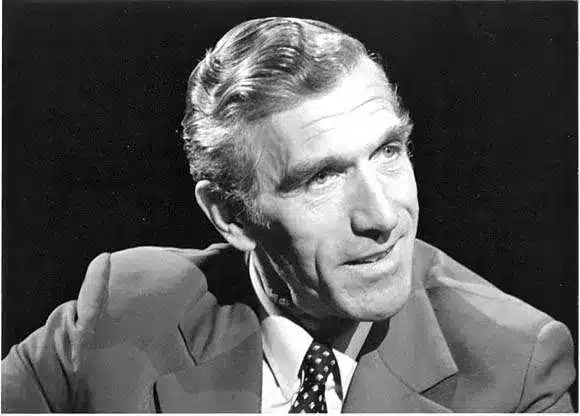
Relational psychology, another key focus of Palo Alto research, explores how relationships between individuals develop and function. Emphasizes the interdependence and mutual influence among individuals, highlighting the importance of context and power dynamics within relationships. This approach recognizes that relationships are not static but constantly evolving, shaped by communication patterns, shared experiences, and perceptions of each person involved.
In addition, Palo Alto psychologists stress the importance of feedback loops in communication and relationships. They argue that individuals engage in a continuous feedback process in which their behavior and responses influence others. This feedback loop can lead to constructive or destructive communication and relational dynamics patterns.
By understanding the main concepts of Palo Alto psychological research, particularly in communication and relational psychology, we gain valuable insights into the complexity of human interactions. This knowledge can help us improve our communication skills, foster healthier relationships, and navigate the complexities of social dynamics with greater sensitivity and understanding.
If you like this post, you can always donate to support my activity! One coffee is enough!

